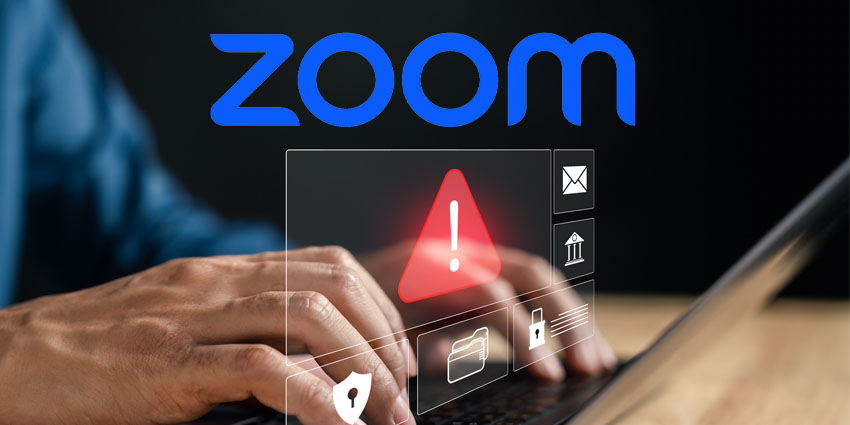Not all meeting mishaps are what they seem. A newly observed phishing attack is taking advantage of the familiar frustration of being dropped from a Zoom call and using it as bait to steal enterprise login credentials.
According to Cofense’s Phishing Defense Center, this sophisticated campaign tricks users with urgency and believable visuals, but also poses a direct risk to organisational security by enabling credential theft and potential lateral movement across systems.
Here’s what’s happening, and what enterprise IT, security, and decision-makers need to do about it.
Zoom Panic as a Phishing Vector: Inside the Campaign
Cofense researchers have uncovered a phishing scheme that weaponises urgency and the routine chaos of virtual meetings. Users receive an email with a subject line like “URGENT – Emergency Meeting”, packed with emotionally charged phrases like “immediately,” “critical issue,” and “time-sensitive.” This language is a deliberate psychological tactic designed to rush recipients into clicking before they think.
The email contains what appears to be a Zoom meeting link. However, as you might have surmised, this is no ordinary invite. The visible hyperlink looks legitimate, but deceptive URL masking redirects users through several tracking and obfuscation layers, ultimately landing them on a fake Zoom page hosted at a suspicious URL. The final destination is a highly realistic spoof of a Zoom interface, complete with participants waving and reacting as though a real meeting is underway.
Users are pushed to log in again after a staged “connection timeout” message. The phishing page displays a Zoom Workplace login that closely mirrors the real one, with the victim’s email pre-filled, making the deception even more convincing. Once a user enters their password, that data, along with their IP address and location, is exfiltrated via Telegram, a platform often exploited by threat actors for its encryption and anonymity.
This is far more than a sly scam. It’s a potential foothold for attackers into corporate systems. Stolen Zoom credentials often double as SSO or employee logins, opening the door to privilege escalation, internal reconnaissance, and even long-term infiltration via Advanced Persistent Threats (APTs).
What Enterprise Leaders Must Do to Protect Against Phishing 2.0
This campaign is a credible wake-up call for security, IT, and business leaders responsible for safeguarding digital infrastructure. Blocking dodgy domains and hoping users “know better ” is no longer sufficient. Today’s phishing threats have metamorphosed into something immersive, personalised, and devastatingly convincing.
For CISOs and security teams, the central takeaway is that phishing detection must evolve. Traditional perimeter-based defences aren’t equipped to catch dynamic social engineering attacks like these, so investing in behavioural phishing detection, real-time threat response, and advanced email gateway filtering is essential. Platforms that simulate phishing attacks and deliver contextual training, as Cofense advocates, can help users detect red flags even in high-pressure scenarios.
For CIOs and IT leaders, consider tightening controls around cloud-based logins and meeting platforms. Mandate multi-factor authentication (MFA) across all collaboration tools and SSO platforms. Monitor unusual login patterns, particularly following mass meeting invitations or failed login attempts. Also, credential hygiene should be treated with the same priority as patch management or endpoint protection.
For the broader tech buying committee and C-suite, this incident illustrates why security must be baked into all SaaS procurement decisions. Any platform that serves as a core productivity tool, from Zoom to Microsoft Teams, must be evaluated not only for features but for its resilience to impersonation, phishing, and third-party spoofing. Ask vendors how they practically prevent their brand from being exploited in attacks like this, and don’t settle for vague assurances.
This phishing format illustrates how deeply trust, urgency, and user behaviour can be exploited in the era of remote work and platform sprawl. If attackers can turn a simple “meeting link” into a breach vector, it’s time to rethink your organisation’s entire approach to email, identity, and incident response.
Key Takeaway
Phishing has evolved, and so must enterprise defence. Attacks like this exploit human instincts and tool familiarity with alarming effectiveness. Organisations that combine technical safeguards, real-time user training, and cross-functional security awareness will be best positioned to prevent a minor mishap from becoming a major breach.







